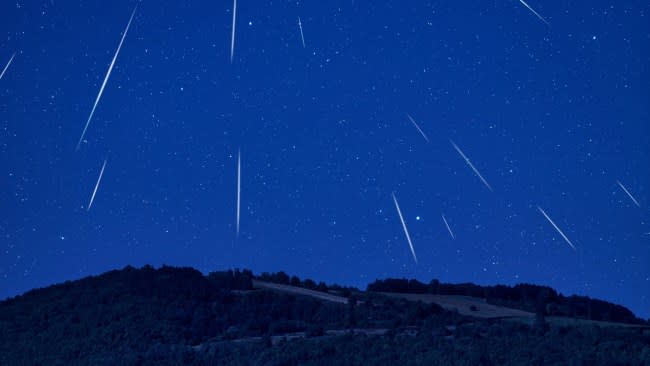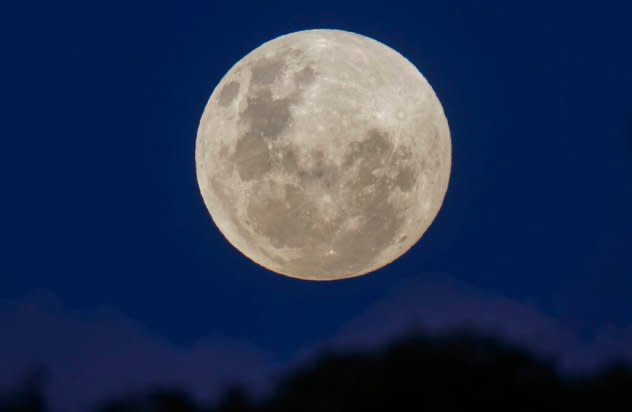Moon, Mercury and meteors: Don't miss these 3 events in the May sky
The best meteor shower of the spring will kick off a month featuring a variety of astronomical sights, none of which will require a telescope to see.
Warming weather across North America will provide more comfortable conditions for spending time under the stars with summer right around the corner although there may still be a few chilly nights across the northern tier of the United States.
The first weekend of the month will bring the peak of the Eta Aquarid meteor shower, the second event of its kind in less than two weeks following the Lyrids in late April. And experts say 2024 will be a particularly good year for viewing the event.
"Most observers in the northern hemisphere usually see a maximum of 15-20 eta Aquariid meteors per hour under ideal conditions. Those rates could be doubled this year," the American Meteor Society explained on its website.
 |
Silhouette of countryside landscape under the starry skies and meteor shower. (Getty Images) |
The peak falls on the night of Saturday, May 4, into the early hours of Sunday, May 5. The best time to view the event is between 2 a.m. and 5 a.m., local time, on Sunday.
Mercury is one of the most challenging planets to spot in the sky due to its proximity to the sun, but early risers will have the opportunity to see the planet during the first full week of the month.
On May 9, Mercury will be visible low in the eastern sky before sunrise. If cloudy conditions obscure the sky, stargazers should be able to see the planet on the mornings that follow if the cloud conditions improve although Mercury may not appear quite as high in the sky compared to May 9.
GET THE FREE ACCUWEATHER APP
•Have the app? Unlock AccuWeather Alerts™ with Premium+
No telescope is required to see Mercury, but it will be dim and low in the sky, so onlookers will need a clear view of the eastern horizon and to look for it about an hour before sunrise.
The last full moon of spring will rise on Thursday, May 23, a moon that has many nicknames due to the flora and fauna on full display during the month.
The most common nickname for May's full moon is the Flower Moon, as it is the time when blooming and blossoming flowers are on full display across North America, according to the Old Farmer's Almanac.
 |
A full moon rises in Sao Paulo, Brazil, Sunday, May 15, 2022. (AP Photo/Andre Penner) |
Other nicknames for May's full moon include the Budding Moon, the Egg Laying Moon, the Fog Moon and the Planting Moon.
Want next-level safety, ad-free? Unlock advanced, hyperlocal severe weather alerts when you subscribe to Premium+ on the AccuWeather app. AccuWeather Alerts™ are prompted by our expert meteorologists who monitor and analyze dangerous weather risks 24/7 to keep you and your family safer.

 Yahoo Sports
Yahoo Sports 


